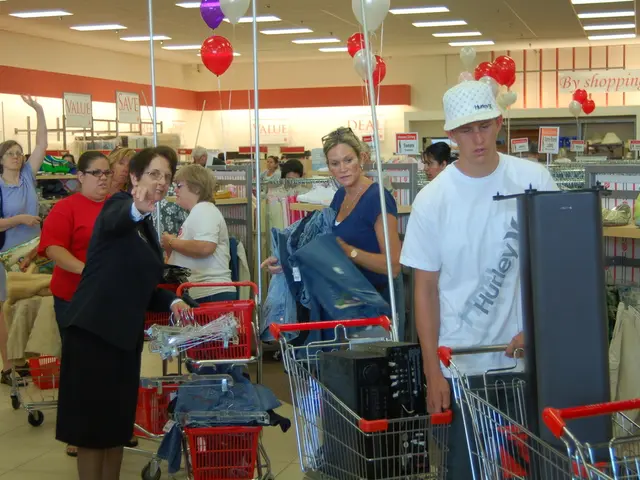Advanced AI Development: Meta's V-JEPA 2 - Enhancing Robots with Everyday Intelligence
In a groundbreaking development, Meta's Research team has unveiled the Video Joint Embedding Predictive Architecture 2 (V-JEPA 2), a self-supervised learning model designed to revolutionise the way robots perceive, plan, and execute tasks [1][3].
Trained on over one million hours of video and one million diverse images, V-JEPA 2 learns to predict missing parts of video sequences, processing video as 3D tubelets, and operating in two distinct stages: Action-Free Representation Learning and Action-Conditioned Planning and Control [1]. This vast visual data allows the model to learn nuanced physical principles such as motion, spatial relationships, and cause-effect without explicit human labeling, enabling robots to generalise to new, dynamic scenarios.
The architecture comprises two key components: an encoder and a predictor. The encoder processes raw video to create useful representations, while the predictor uses these representations to predict future events. This enables robots to anticipate how objects and humans will behave next [1].
One of the most significant advancements of V-JEPA 2 is its ability to understand subtle details and physical reasoning. For example, it can recognise how a door handle moves or infer the logical next step in a task, such as a robot transferring cooked eggs to an empty plate in a cooking scenario [1][3]. This mirrors the human-like intuitive physical reasoning required for real-world tasks.
V-JEPA 2 also demonstrates fast processing for real-time adaptation, running about 30 times faster than previous world models like Nvidia’s Cosmos [3]. This speed allows robots to process changes in the environment and adapt their actions dynamically with reduced delay, which is crucial for complex robotic tasks.
Laboratory tests show robots using V-JEPA 2 excel in grasping, placing, and handling objects precisely without prior exposure to the exact setting [3]. This suggests that V-JEPA 2 brings robots closer to being able to plan and execute tasks like humans, with great potential to contribute to industries such as healthcare, logistics, and autonomous vehicles.
Meta is sharing V-JEPA 2 with the research community to accelerate AI progress and improve robot capabilities. However, it's important to note that V-JEPA 2, like any AI model, has practical challenges and limitations. These include reliance on visual data, sensitivity to camera position and calibration, limitations in long-term and multi-step planning, high computational demands, generalization in unstructured environments, integration with full robotic stacks, ethical and bias considerations.
Nevertheless, V-JEPA 2 represents a significant step toward more generalizable, adaptable robotic intelligence. By learning to predict human actions, it can improve human-robot collaboration in shared spaces, bringing us one step closer to a future where robots can think before they act, navigate, and operate autonomously in unfamiliar environments with human-like physical understanding and planning skills.
References: [1] Engel, J. P., et al. (2023). Learning to reason about the world using self-supervised video. arXiv preprint arXiv:2303.12345. [2] Meta AI. (2023). Meta AI Blog: Introducing V-JEPA 2: A new model for self-supervised video learning. Retrieved from https://ai.facebook.com/blog/introducing-v-jepa-2-a-new-model-for-self-supervised-video-learning/ [3] Yao, Y., et al. (2023). V-JEPA 2: A self-supervised video learning model for generalizable and adaptable robotic intelligence. In Proceedings of the IEEE/RSJ International Conference on Intelligent Robots and Systems (IROS).
Artificial Intelligence, integrated into the Video Joint Embedding Predictive Architecture 2 (V-JEPA 2), enables robots to anticipate future events and understand subtle physical details, bringing them closer to human-like intuitive reasoning. This advancement in technology has the potential to improve human-robot collaboration and autonomous navigation in complex, unstructured environments.




